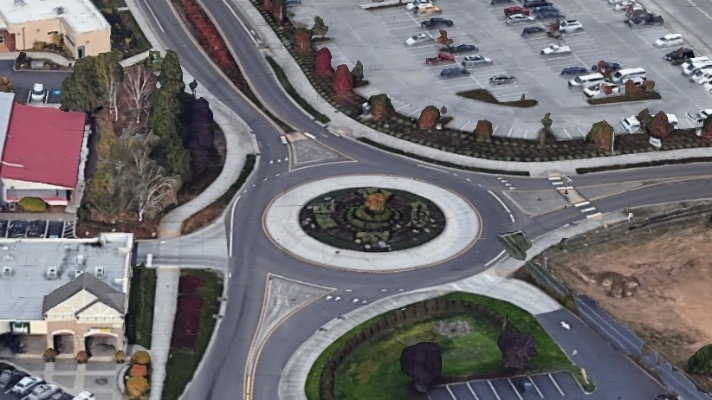Roundabouts in Clark County
A modern roundabout is a transportation management tool that moves traffic through an intersection without the aid of traffic signals. A roundabout is a circular intersection in which traffic travels counterclockwise around a central island and entering traffic must yield the right-of-way to circulating traffic. Roundabouts are designed to include appropriate geometric features to promote slow and consistent speeds for all movements.
Traffic safety benefits of roundabouts
Simply put, roundabouts — which are also called rotaries — keep traffic moving safely and steadily. Studies have shown that roundabouts are safer than traditional stop sign or signal-controlled intersections.
Roundabouts reduced injury crashes by 75 percent at intersections where stop signs or signals were previously used for traffic control, according to a study by the Insurance Institute for Highway Safety (IIHS). Studies by the IIHS and Federal Highway Administration have shown that roundabouts typically achieve:
- A 37 percent reduction in overall collisions
- A 75 percent reduction in injury collisions
- A 90 percent reduction in fatality collisions
- A 40 percent reduction in pedestrian collisions
There are several reasons why roundabouts help reduce the likelihood and severity of collisions:
- Low travel speeds – Drivers must slow down and yield to traffic before entering a roundabout. Speeds in the roundabout are typically between 15 and 20 miles per hour. The few collisions that occur in roundabouts are typically minor and cause few injuries since they occur at such low speeds.
- No light to beat – Roundabouts are designed to promote a continuous, circular flow of traffic. Drivers need only yield to traffic before entering a roundabout; if there is no traffic in the roundabout, drivers are not required to stop. Because traffic is constantly flowing through the intersection, drivers don't have the incentive to speed up to try and "beat the light," like they might at a traditional intersection.
- One-way travel – Roads entering a roundabout are gently curved to direct drivers into the intersection and help them travel counterclockwise around the roundabout. The curved roads and one-way travel around the roundabout eliminate the possibility for T-bone and head-on collisions.
Curious to know more? Watch a video about how roundabouts improve safety.
How to drive a roundabout
Roundabouts are designed to make intersections safer and more efficient for drivers, pedestrians and cyclists. There are two types of roundabouts: Single-lane roundabouts and multi-lane roundabouts.
There are a few key things to remember about driving roundabouts:
- Yield to drivers in the roundabout.
- Signal when you are going to exit the roundabout.
- Stay in your lane; do not change lanes.
- Do not stop in the roundabout.
- Avoid driving next to oversize vehicles.
Learn more from Washington State Department of Transportation.
